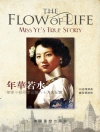In ‘The Story of Joan of Arc the Witch-Saint, ‘ M. M. Mangasarian presents a compelling narrative that intertwines historical facts with literary embellishments to explore the life of Joan of Arc. Utilizing a distinctive style that blends biographical detail with philosophical inquiry, Mangasarian delves into the societal perceptions of female strength and piety in the 15th century. This work not only recounts Joan’s military exploits and martyrdom but also scrutinizes the complexities surrounding her legacy as both a saint and a figure of controversy. Through rich prose, the author contextualizes Joan’s trials in an era rife with superstition and religious fervor, invoking an engaging dialogue on the nature of faith and the occult. M. M. Mangasarian was a notable Armenian-American writer and philosopher who straddled religious and secular thought. His background, deeply influenced by the intersections of faith, reason, and the burgeoning secular movements of his time, significantly colors his portrayal of Joan of Arc. His interest in deconstructing myths and examining the nuances of historical figures is evident throughout this work, suggesting a profound engagement with the paradox of Joan’s sanctity and supposed witchcraft. Readers seeking an intellectually rigorous yet accessible exploration of Joan of Arc’s life will find Mangasarian’s work both enlightening and thought-provoking. This book appeals to historians, literary enthusiasts, and anyone intrigued by the complex interplay between gender, faith, and historical narrative. Mangasarian invites readers to reconsider preconceived notions of heroism and villainy through the lens of one of history’s most enigmatic figures.
लेखक के बारे में
Mangasar Mugurditch Mangasarian (1859–1943) was an Armenian-American rationalist and secularist speaker and writer, known for his works that challenged the orthodoxies of traditional religions. Born in the Ottoman Empire, Mangasarian immigrated to the United States, where he pursued his passion for theological studies and ultimately became a prominent critic of institutionalized religion. His distinctive literary style, characterized by a fusion of historical narrative and criticism, is exemplified in his book ‘The Story of Joan of Arc the Witch-Saint, ‘ wherein he approaches the life and legacy of Joan of Arc from a rationalist perspective, subverting the saintly narratives that often shroud her figure in traditional historical accounts. Mangasarian’s approach to religious critique was not merely destructive; he aimed to bring to light the complexities and human aspects of historical religious figures, thus engaging readers in intellectual exploration. His contributions to rationalist literature are marked by engaging prose and a profound questioning of established dogma, granting him a noteworthy place in the American free-thought movement of the late 19th and early 20th centuries. Mangasarian’s works continue to be referenced for their historical significance and their role in challenging readers to view religious narratives through a critical lens.












